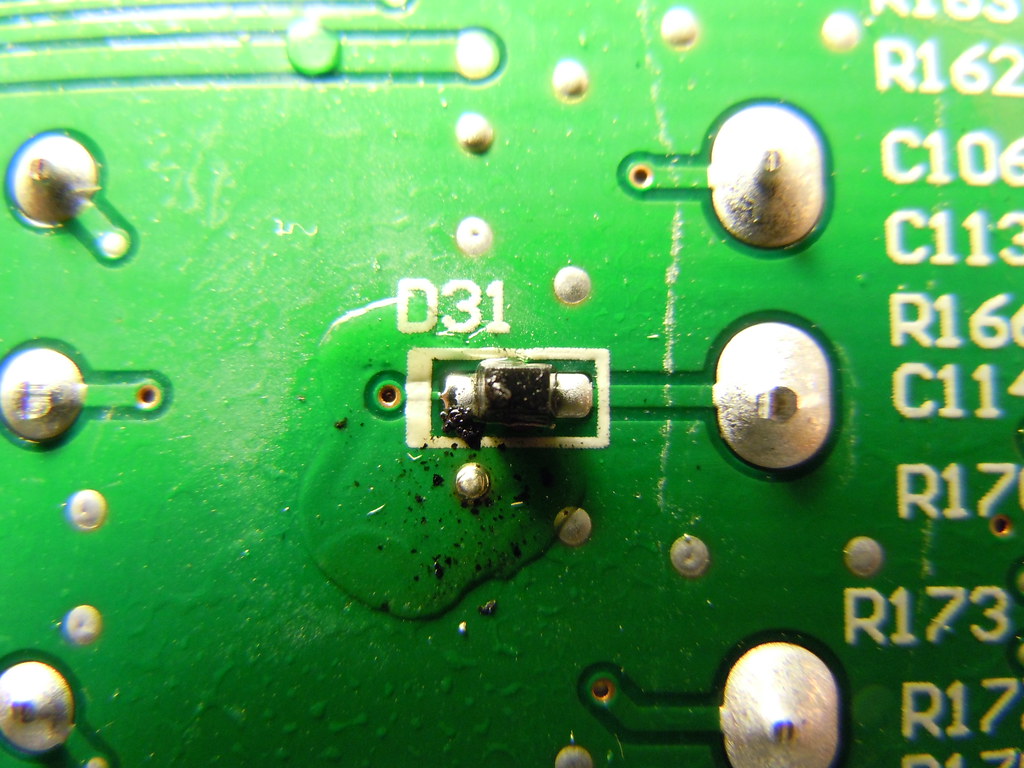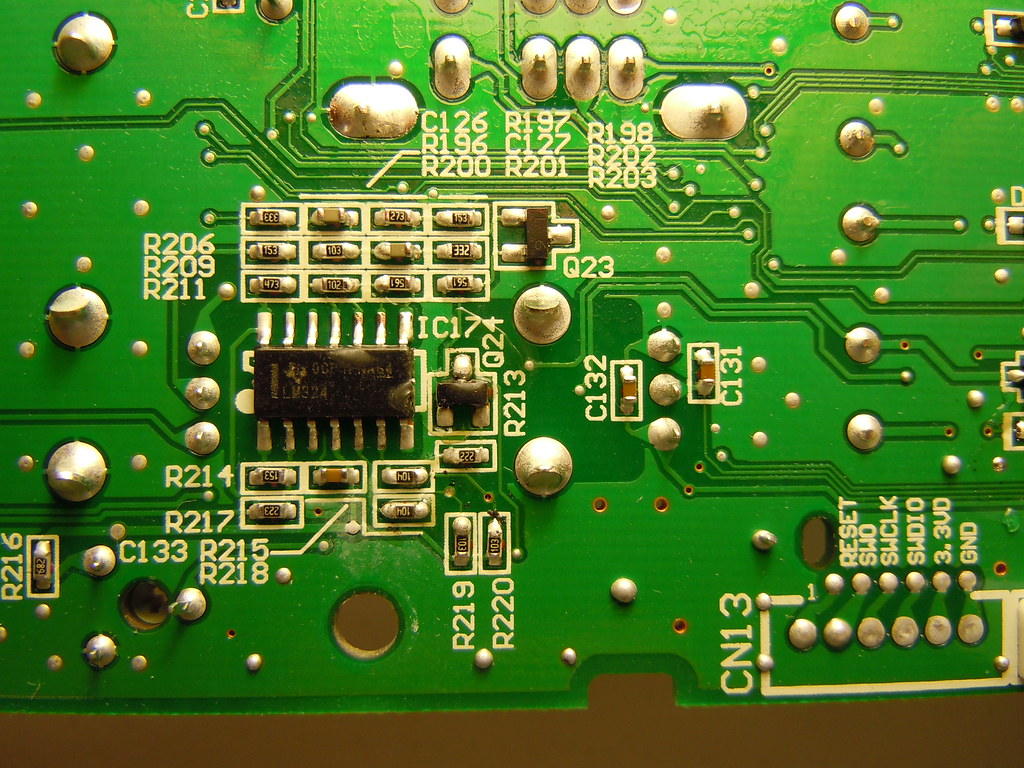Can you trigger this problem with no cartridge inserted? What about pressing only one of the buttons but doing applying a fair bit of force?
738 Aug 11, 2013 4:27 pm
Re: Gameboy Programmer Group Printing (274 replies, posted in Nintendo Handhelds)
Read the datasheet before going for a chip.
DT28F160 - 3V signal level. 16 bit data bus. Unsuitable.
AM29F800 - 5V signal level. Has 8 bit data bus mode. Good.
739 Aug 10, 2013 1:41 am
Re: can't send email to [email protected] (6 replies, posted in Bugs and Requests)
This is a known problem. Sorry. You can PM me about moderation issues.
However, we don't allow users to change their name. This is one of two things that were underlined in the rules you accepted when you signed up.
740 Aug 7, 2013 6:18 pm
Re: Wax seeping from the chips inside a cartridge (40 replies, posted in Nintendo Handhelds)
741 Aug 3, 2013 2:00 am
Re: Problems with USB 64M Smart Card (4 replies, posted in Nintendo Handhelds)
On one side, there's a metal clip which holds the battery in place. If you just bend it enough so it doesn't hold the battery back, the battery should spring up on its own. A needle may be too thin to do this comfortably. I'd recommend a flathead screwdriver.
742 Jul 30, 2013 10:13 am
Re: Computer Virus Help (71 replies, posted in General Discussion)
hey guys i drove my car into a tree and now it doesnt work
i figured that chip musicians use cars and i left my carts at home so how do i fix my car?
Which part of your car do you typically use to make chip music? ![]()
743 Jul 29, 2013 6:08 pm
Re: Who wants to remix this one? (16 replies, posted in Collaborations)
I'm taking a stab at this as well.
744 Jul 26, 2013 2:36 am
Re: WTB serial port cables for transferer II (4 replies, posted in Trading Post)
It's a parallel cable, not a serial cable. If you have somehow connected it through a cable to something marked as a serial port on the computer, you've probably blown the transferer.
Did this particular cable use to work before? Did you switch to a new computer lately? Muck around with the BIOS settings? If so, those are more likely suspects to begin with.
If you get a new cable, make sure it's a 1-1 (one to one) cable, not a Laplink cable.
745 Jul 25, 2013 2:27 pm
Re: Frequency Response of Gameboy DMG-01 (13 replies, posted in Nintendo Handhelds)
I'll just leave this here http://www.herbertweixelbaum.com/comparison.htm
746 Jul 25, 2013 1:58 pm
Re: FLASHING SERVICES FOR FLASH CARTRIDGES [USA] (30 replies, posted in Trading Post)
Writing to the ROM of a white Nintendo Power cartridge with a bleepbloop/smartboy flasher won't work. If anyone needs help with that, I guess I could help. Oh, and definitely get LittleFM. It's not like I'm partial or anything, but it's a pretty good thing to add to LSDj.
747 Jul 25, 2013 9:07 am
Re: What do you do when your tracks get used without permission? (58 replies, posted in General Discussion)
748 Jul 17, 2013 3:25 am
Re: Gameboy dev kit? (106 replies, posted in Nintendo Handhelds)
As I pointed out on BH, it seems like their house may be on the verge of being foreclosed, so maybe he's just doing whatever he can to make some money. I can have some sympathy for that I guess, but that thing that he's selling, that is what it is.
749 Jul 13, 2013 9:25 pm
Re: Gameboy dev kit? (106 replies, posted in Nintendo Handhelds)
Just felt like posting, he re-listed it.
http://www.ebay.com/itm/Gameboy-Develop … 1133244477
And I made a new post over at BH: http://forums.benheck.com/viewtopic.php … 58#p487158
750 Jul 13, 2013 6:29 pm
Re: RIght On Time, Skrilrex Cover, LSDJ, (Drop)! (53 replies, posted in Releases)
Ok, this was fun while it lasted. If you didn't figure it out, this is an obvious troll account, which belongs to another member of the forum.
751 Jul 12, 2013 10:58 am
Re: LSDJ problems :P (7 replies, posted in Nintendo Handhelds)
Moving this away from bugs and requests. That forum is for bugs and requests related to the site.
752 Jul 11, 2013 12:15 pm
Re: Advanced LSDj Tutorial - The Ghost Channel (45 replies, posted in Nintendo Handhelds)
Believe it or not, I have experimented with these things. A couple of pointers:
You can select multiple samples using select+B and then moving the pointer to extend the election, similar to other clipboard operations in LSDj. Once you've done that, you can press up and down to offset the selection. This also doubles as a copy function, and you can paste with sel+A. When you have a selection, you can also flip the selection horizontally/vertically by holding A and pressing left/right or up/down. By using these tricks and absuing symmetries in the waveforms, you can speed up the manual labor a lot.
You can also make other waveforms, like a sawtooth by moving up 1,2,3,4,1,2,3,4 etc amplitude steps. You can also try doing other intervals, but those have to be more than one octave up. You have the harmonic series dictating these notes:
Overtone.
v Coresponding note.
1 Base note
2 1st octave
3 1st octave, 7 semitones (major 5th, G in a C scale)
4 2nd octave
5 2nd octave, 4 semitones (major 3rd, E in a C scale)
6 2nd octave, 7 semitones (major 5th, G in a C scale)
7 2nd octave, 10 semitones (minor 7th, A#/Bb in a C scale)
8 2nd octaveThis take a little trickery to get right. In part because these are perfect intervals and slightly detuned from our modern equal temperament tuning, in part because, unlike the octave intervals, the other intervals don't line up to single steps, so you don't move the cursor the same number of steps to the right for each part of the superimposed waveforms. This makes each interval sound a bit different due to aliasing.
In practice, perhaps only index 3 (octave + fifth) is really useful, unless you want to get waves that sound "bad".
To figure out how many steps you should move the cursor to the right between each half wave, you calculate 16/x and that's the number of steps between each alternation. For example, for the 1 octave 5th, that's 16/3 = 5.333... so on average 5 1/3 steps between each step.
Now how to do this easily? Let's use some Javascript. Press ctrl+shift-j (if you're in Chrome) to open up the JS console. Paste the following. (Fixed!)
mod = 32/3; acc = 0; i=32; while(i--){console.log((i%mod)>=mod/2)}You should see something like this:
This means, move the waveform up for 5 samples, leave the next 5 samples untouched, move the next 6 samples up, leave the next 5 sample untouched and so on. Vary the 3 in 32/3 for a different overtone according to the table above. Again, note that the higher overtones will sound ugly, and are also two octaves up.
Lastly, something you obviously must have done, but didn't address in the video, is to use the vshift value in the synth screen to move the waveform when generating it.
I would make a video about all this if I didn't hate my voice so much.


